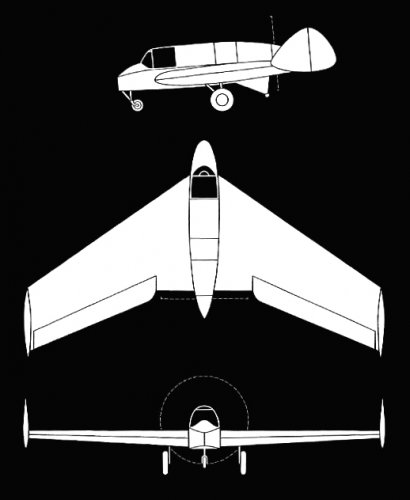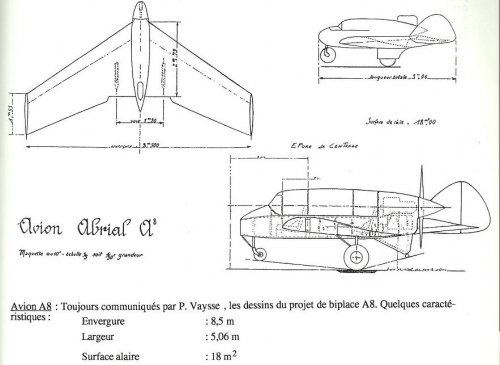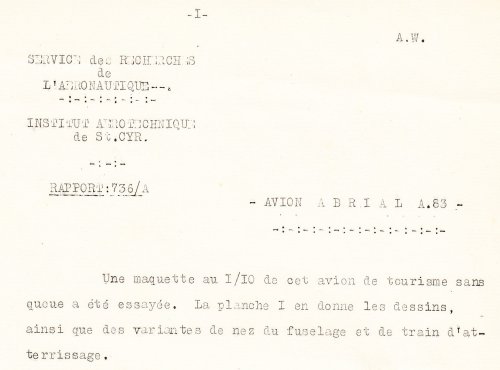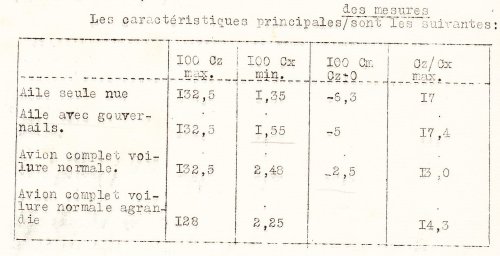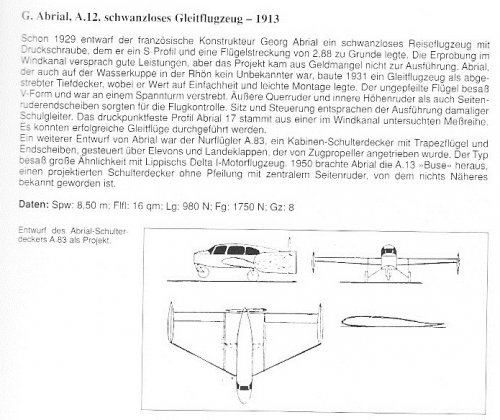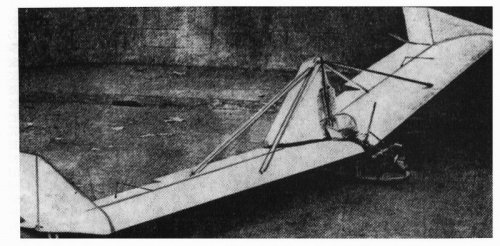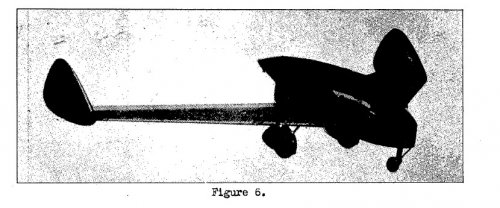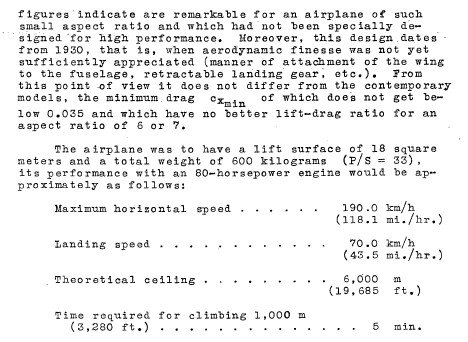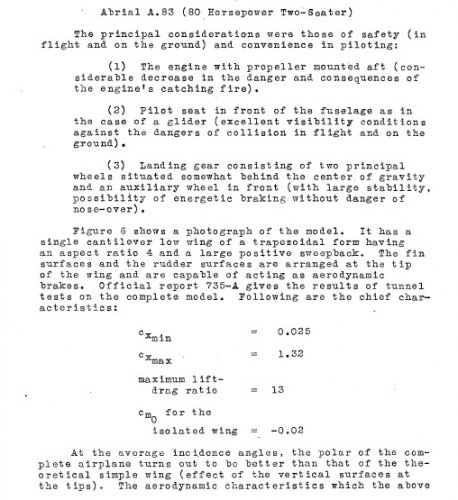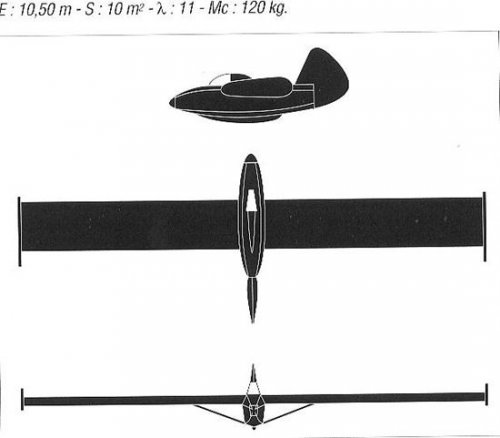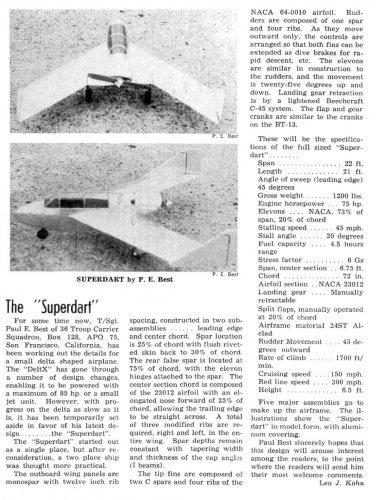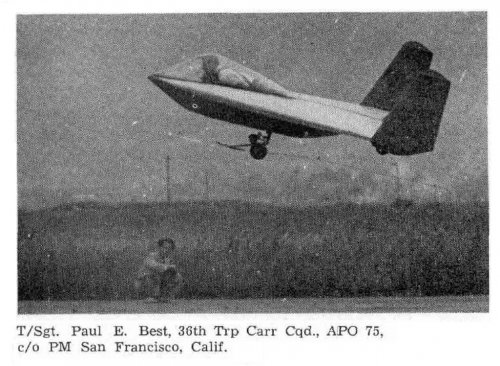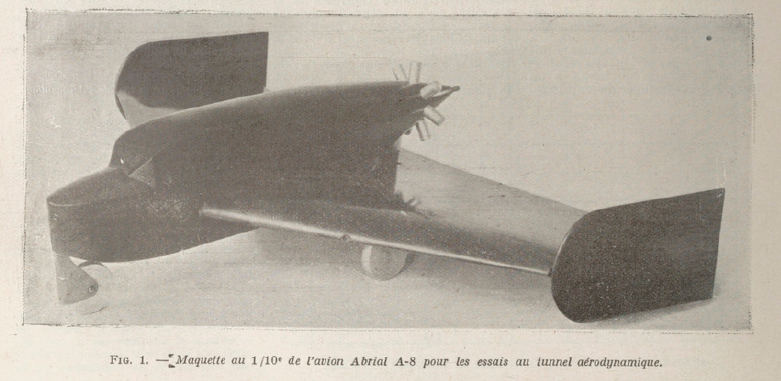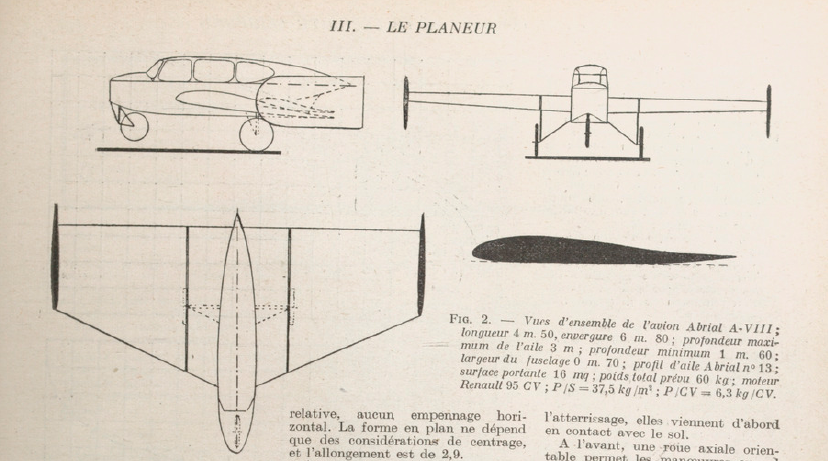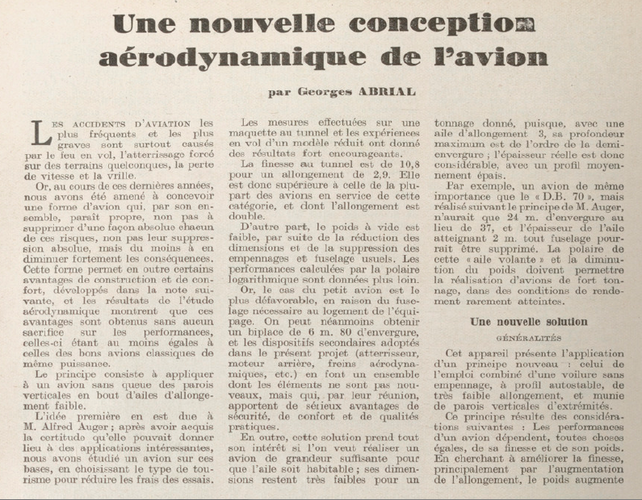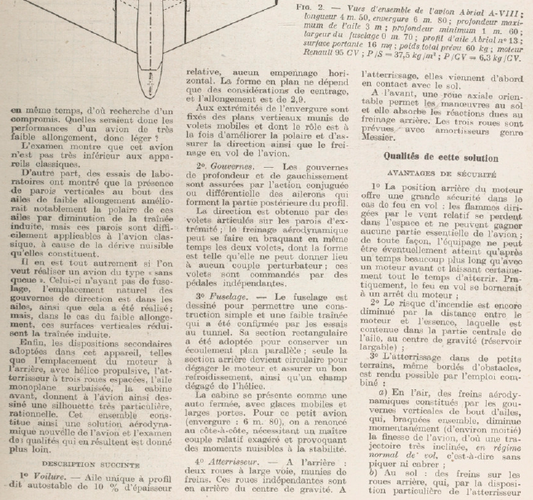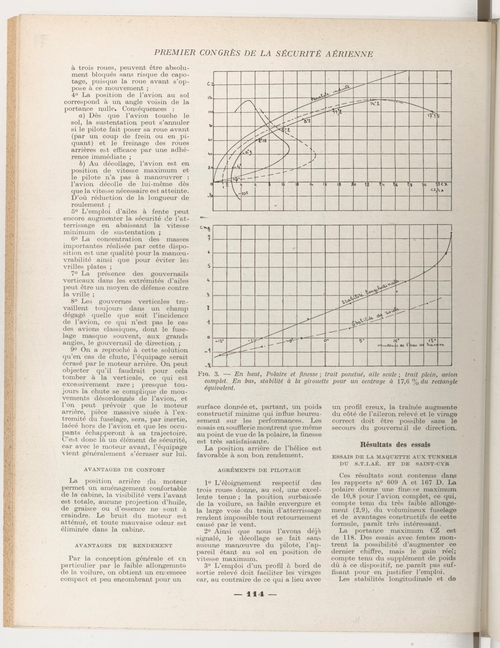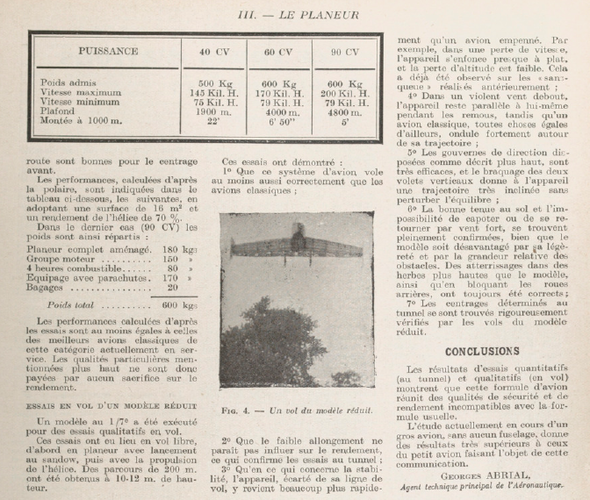Below you'll find another document from another issue of Trait d'Union (n°170), by Charles Claveau.
The translation is: "At the 1932 Salon, one could see on the Caudron booth a model of the A.8, a two-seat tailless tourism aircraft with closed cabin. The project was shown at the Security Congress in Dec. 1930. With small dimensions, its lift-to-drag ratio was 14. The engine planned at the time was a Salmson 80hp. It should attain 190 km/h, 6000m and land at 62 km/h, reaching 1000m in 5 min. Total weight was 600kg with fuel for 4 hours."
Stargazer2006 said:
- The "C./A.260" is said to have been powered by a 75 hp Salmson engine (powerful enough for a single-seater but a bit feeble for a two-seater). The A.8 would have used a 95 hp Renault 4 Pb. Unless T.U.'s claim that the 1930 aircraft was allegedly called the C.260 is wrong, this is proof that the C./A. 260 and the A.8 CAN'T be the same machine.
It can, those light aircraft often received a variety of engines. See the many variants of the C.270 or Farman 230 families. If the aircraft were actually built, the engine variants would have been distinguished by sub-designations.
Stargazer2006 said:
- There apparently WAS a tailless aircraft prototype built by Abrial in 1930. However I find the use of the French word "réalisa" by the T.U. author puzzling. I translated it as "built", although it makes it a lot less ambiguous than it really is in fact. The word conveys the idea that the 1930 "C.260" was more than just a project but an actual built type of some kind. If so, why can't we find any trace of it in any Caudron source? Why do no photos exists? For some reason no images or photos of this machine seem to have popped up. Did it just hop? Did it crash?
Because the author has no other information about the aircraft, I think that the word "réalisa" was a bit over-enthusiastic, and it was perhaps a project only, or maybe construction started and was not finished.
Stargazer2006 said:
- If this "C.260" was powered by a 75 hp engine, then it must have been a single-seater. Was it produced independently and then taken over by Caudron? Or was it done at Caudron from the start, as the words "chez Caudron would indicate? At any rate, it must have been interesting and/or successful enough for Caudron to to endorse the project and even consider building a larger tandem-seat version, shown in model form on their 1932 stand at the Paris Air Show.
It was not necessarily a single seater. See the Farman 230 two-seater with Salmson 40hp. Also it is not clear that Caudron fully endorsed the project. It seems possible that it merely rented its factory and workforce (same thing for the Fauvel and Viscaya designs built by Caudron, I think.)
Stargazer2006 said:
- T.U.'s original document shows two distinct designs as both pertaining to the A.8. The top view shows a seemingly disproportionate front wheel and a strange square dorsal fin, while the lower image shows a suggested cutaway view with seat arrangement, engine placement, etc. This gives the impression that the bottom one is the real one, BUT that would be misinterpreting the document (Pelletier unfortunately made that mistake by reproducing that configuration in his book as showing the planned full-scale article!) Why? Because the undergear of the second design would be far too feeble to sustain the actual aircraft (Pelletier must have thought that too, as he thickened the wheeltrain rods!), and also because it is fixed (as opposed to retractable in the top views). That bottom design carries the captions "Epure de centrage" and "Maquette au 10e - échelle 1/5 soit 1/30e grandeur". Although I can't quite figure out these scales (1/10th? 1/5th? 1/30th?) it seems clear here that the lower design, despite being more detailed, does not depict the projected full-scale version but a very small scale-model used to test weight balancing.
I think that "Maquette au 10e - échelle 1/5 soit 1/50 [not 1/30] de grandeur" applies to the two upper views. These drawings would depict the 1/10 wind tunnel model. The drawings itself were surely five times smaller than the 1/10 model, hence at 1/50 scale when compared to the real-scale aircraft ("grandeur"). I don't think that the gear is retractable, it seems to have fairings on the main wheels. Retractable gear would have been too heavy and complex at the time for such a low-powered aircraft.
Conversely, I think that the words "Épure de centrage" apply to the lower view. They depict the internals of the actual aircraft, for calculation of the CG location. None of those are actual construction drawings.
For the designations, I believe that the project was designated A.8 by Abrial, successively or indifferently planned with a radial Salmson or an inline Renault. One wind tunnel model was built at 1/10 scale, based on the upper two drawings.
I guess that Abrial approached Caudron for the construction of the actual aircraft in their works. A Caudron designation slot was registered, C.260 or perhaps A.260 with Abrial's initial (like the P.V. 200 by Pierre de Viscaya). The model was exhibited in 1932 at the Caudron booth but I guess that nothing further emerged.
Adrien


